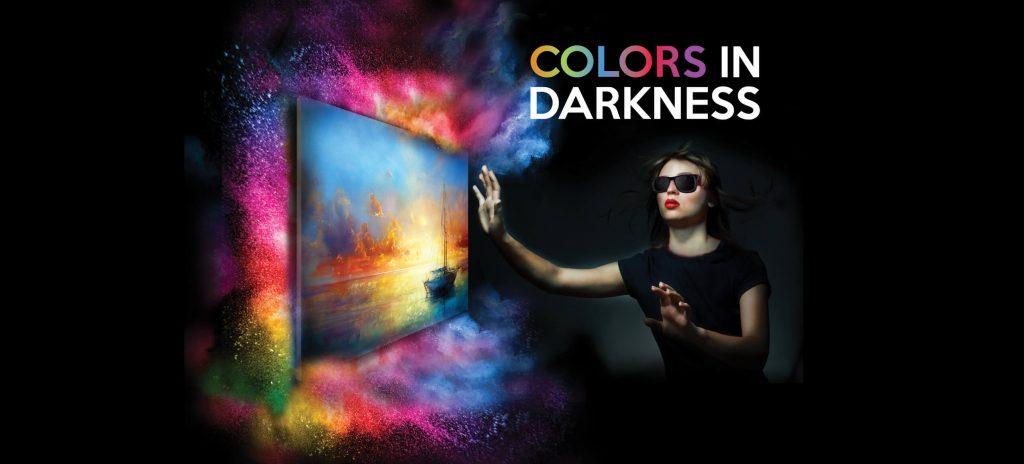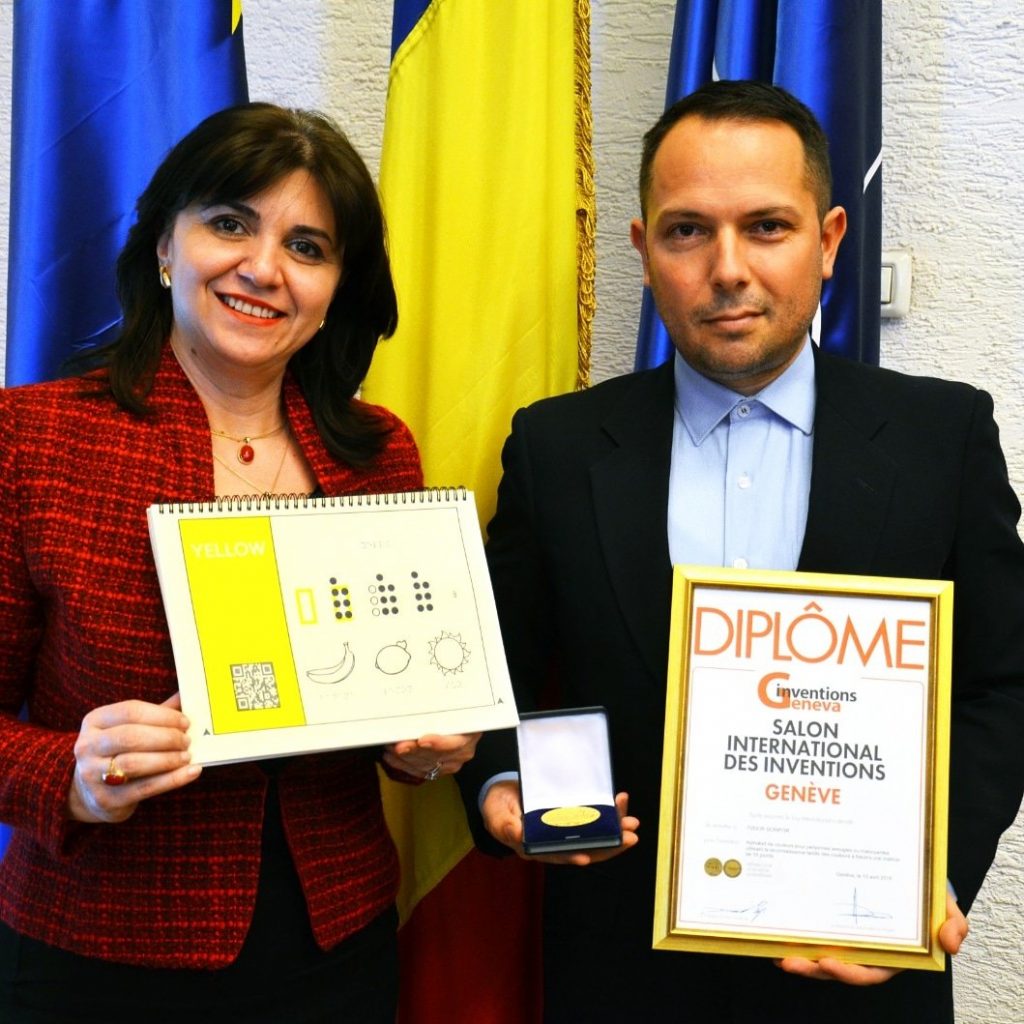It was difficult to communicate about colors – their meaning, their use, and the importance of gradation – to a blind person attending his painting workshop, so Tudor Scripor started reading everything he could about the visually impaired and how they perceive colors. After many years of research and testing, Kolozsvár/Cluj-born Scripor launched an innovative solution called the Scripor Alphabet, a tactile representation of colors that allows the blind to read and write colors.

The Scripor Alphabet contains 10 tactile graphic elements consisting of the three primary colors (red, yellow, blue), the secondary colors (orange, green, purple), the tertiary color (brown), and the achromatic colors (gray, white, and black).
Scripor and his team worked for seven years before launching the Alphabet of Colors, which was awarded a Gold medal in the Art, Culture and Education category at the Geneva International Inventions Exhibition, as well as Congratulations of the Jury and a Grand Prix award from the German Inventors Association.

The Scripor Alphabet can be used only for colors and can thus complement the Braille alphabet used by visually impaired people today. The Scripor Alphabet cell matrix is composed of 10 dots in total, with three dots organized in three rows and an orientation dot placed at the appropriate edge of each cell. By comparison, the Braille cell usually contains only six dots.
If, for example, a teacher wants to show the color pink to a visually impaired student, he or she does so by placing the red and white next to each other. Gradations are also shown in a similar way: Dark green is communicated by placing the green and black symbols next to each other. A color’s brightness is represented by doubling that specific color’s symbol.
The Alphabet of Colors could benefit the 1.3 billion people globally who have been diagnosed with some form of visual impairment, according to data from the World Health Organization. Romania will be the first country in the world to use this tactile coding system for the visually impaired, the developers have announced. And in early February, they signed a collaboration agreement with Quantum Robotics FTC, which aims to improve the quality of life of the visually impaired by using this tactile coding system as their guide in crowded spaces.